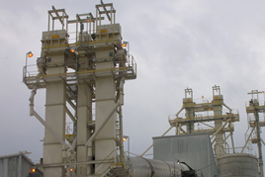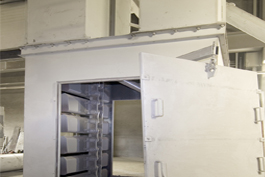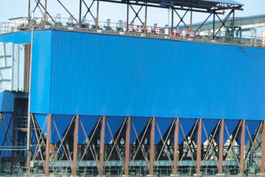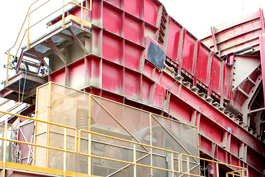I. Definition
A
Sidewall Belt Conveyor, also known as a high-angle belt conveyor, is a type of continuous conveying equipment used for bulk materials. Its structure consists of a flat rubber conveyor belt coated with rubber on both sides, with corrugated sidewalls vertically attached that can freely adjust in wave shape. Between the edges of the sidewalls, rigid cleats are bonded to form a box-shaped compartment, which is used to continuously transport material within the compartments. The Sidewall Belt Conveyor enables bulk materials to be conveyed at inclination angles ranging from 30° to 90°. In addition, it allows for flexible layout configurations to meet complex horizontal, inclined, or vertical conveying requirements in industrial production.
II. Core Components
The Sidewall Belt Conveyor adopts a corrugated sidewall belt with horizontal cleats, and typically consists of three main parts: the base belt, sidewalls, and cleats. The following provides a detailed description of each component.
1.Base Belt
The base belt must have adequate tensile strength and wear resistance. To accommodate angle changes, the longitudinal base belt must be flexible, while the transverse base belt should have a certain degree of rigidity. Our company’s Sidewall Conveyor Belt uses a specially structured transverse rigid base belt that solves the deformation issues encountered during the return operation of large-size belts. The base belt complies with international standards.
2.Sidewalls
The sidewalls of the Sidewall Belt Conveyor are manufactured using a special rubber formula and advanced production techniques to ensure excellent flexibility and fatigue resistance at the sidewall edges. The interior of the sidewalls is reinforced with canvas and features diagonally overlapped layers, effectively preventing edge tearing and improving bending performance. Dynamic fatigue testing is used to simulate real-world operating conditions and ensure durability.
3.Cleats
The cleats are made with a special rubber formulation and advanced molding technology, giving them high rigidity, wear resistance, and impact resistance. Therefore, they are not easily deformed when transporting high-density materials. When cleats are connected to the sidewalls, their spacing must be an integer multiple of the wave pitch. This is to ensure proper alignment during transitions or when passing over pulleys. Otherwise, mismatched motion radii may cause material leakage through the cleat-sidewall junction or lead to accumulation and dead zones during discharge.
.jpg)
III. Typical Application Scenarios
1.Material Hoisting in Underground Mines
In underground mining operations such as metal or coal mines, materials need to be transported from the working face to the surface via vertical or inclined shafts, or between different horizontal levels. Materials typically include coal, iron ore, copper ore, gold ore, etc. The Sidewall Belt Conveyor can handle complex horizontal, inclined, or vertical conveying needs in these underground environments.
2.Raw Ore Transport in Open-Pit Mines
In open-pit mines (e.g., iron ore, copper, coal), transporting materials from the blasting site to the crushing station or processing plant often requires long-distance and high-elevation transport. The Sidewall Belt Conveyor enables steep-angle climbing transport of ore. It can efficiently transport raw ore or waste rock from the mining face to the coarse crushing workshop or temporary stockpile.
3. Process connection of mineral processing plant
Inside mineral processing plant, processes such as crushing, screening, grinding, and flotation often occur on different floors or elevation levels. Additionally, it's critical to prevent material breakage during drops. The Sidewall Belt Conveyor can elevate crushed ore from a lower-level silo to a higher-level screening system, or transfer ore slurry or powder from the grinding section to flotation cells.
4.Tailings Transport
Post-processing tailings or other residues often need to be transported over long distances—sometimes tens of kilometers—to tailings ponds or dry stacking yards. These applications typically involve long-distance and high-elevation transport while requiring minimal leakage. The Sidewall Belt Conveyor is ideal for such needs, offering excellent sealing and environmental protection.
IV. Advantages
1.Low Investment Cost
The Sidewall Belt Conveyor enables high-angle or vertical conveying, which reduces equipment and civil engineering costs, leading to lower overall investment.
2.Reduced Material Spillage
The unique corrugated sidewall structure helps prevent material leakage, improving environmental conditions.
3.Space-Saving Installation
Compared to conventional belt conveyors and bucket elevators, the high-angle or vertical conveying capability of the Sidewall Belt Conveyor reduces the required length to reach the same elevation, minimizing installation space and equipment complexity.
4.Flexible Layout
The system can be combined with other conveying equipment to handle complex material flows involving horizontal, inclined, or vertical transport.
5.Low Energy Consumption
The ability to convey at steep angles reduces the number of rollers and belt length, thereby lowering resistance and energy consumption.
V. Conclusion
With its ability to perform steep or vertical conveying and its highly flexible layout, the Sidewall Belt Conveyor is widely applicable in the mining industry. Our company provides high-quality Sidewall Belt Conveyors backed by professional service, and they are well-received by customers around the world.


.jpg)
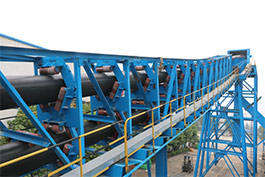
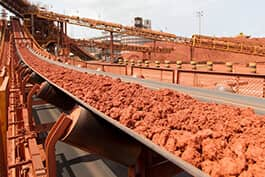
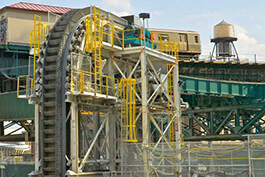
.jpg)
